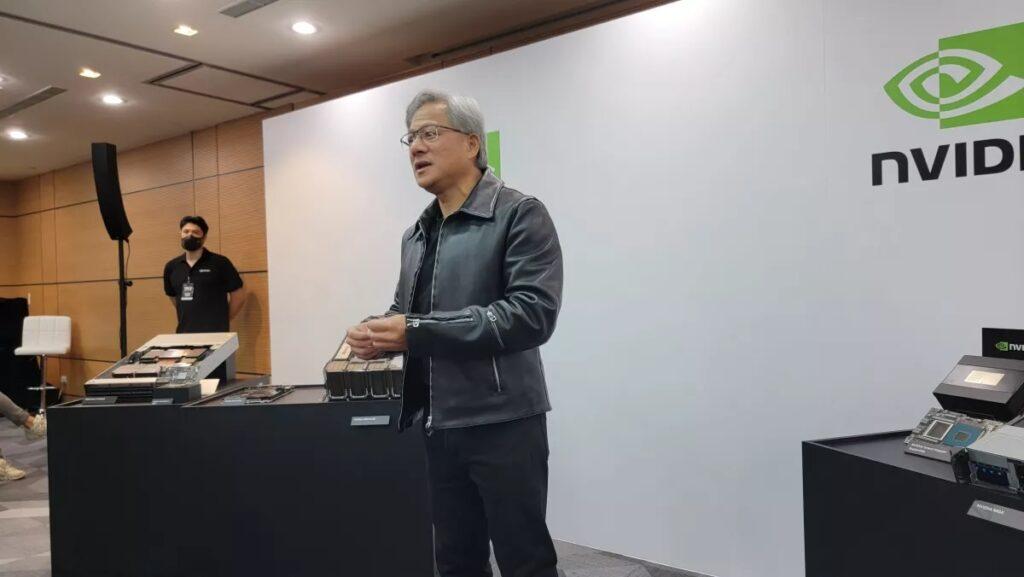Intel-built Nvidia GPUs could be on the horizon
In recent times, a myriad of semiconductor firms have been assailed by deleterious fluctuations in the macroeconomic climate, resulting in profound financial strain. Nevertheless, a select few companies, such as NVIDIA, have managed to thrive against the odds, basking in a veritable whirlwind of success, largely due to the flourishing AI phenomenon. Not only have their projected revenues exceeded expectations, but their market capitalization has also soared dramatically, leaving their competitors languishing in their wake.
At this year’s Computex 2023, Mr. Jensen Huang, the founder, and CEO of NVIDIA, was unquestionably the focal point. His previously unsuspected appearance at Raohe Street Night Market sparked a flurry of online discussion. According to reports by TomsHardware, during an interactive Q&A session with the media at Computex 2023, Huang stated that they are striving towards diversification of chip manufacturing. Recently, they have received test chips produced by Intel’s Foundry Services (IFS), the results of which appear promising.

Image credit: Tom’s Hardware
Given that Intel generates test chips based on their design and shares the data of the process node with customers, the chip NVIDIA received might not necessarily be predicated on its architecture design. Huang did not disclose the specific manufacturing process used in the test chips. However, earlier this year, Intel announced that it had signed an order based on the Intel 3 process, with the recipient being a cloud, edge, and data center solutions provider. This perfectly matches NVIDIA, fulfilling Intel’s depiction of a new customer, thereby making Huang’s statement a potential springboard for further speculation.
In line with Intel’s blueprint, the Intel 3 process is set to commence production in the latter half of this year, with Intel 20A and Intel 18A processes set to follow next year. This furnishes NVIDIA with a broad spectrum of options. Intel has already manufactured test chips using its new Intel 18/20A process. However, the supporting design kit remains at version 0.5, indicating it is not yet primed for distribution to chip design companies.
Amidst the mounting wave of AI, there’s a surging demand for GPUs in data centers. NVIDIA not only has to cope with an explosion of short-term orders but also has to prepare for the long-term redundancy of the supply chain behind these products. The luxury of choice is, by no means, an undesirable thing.





